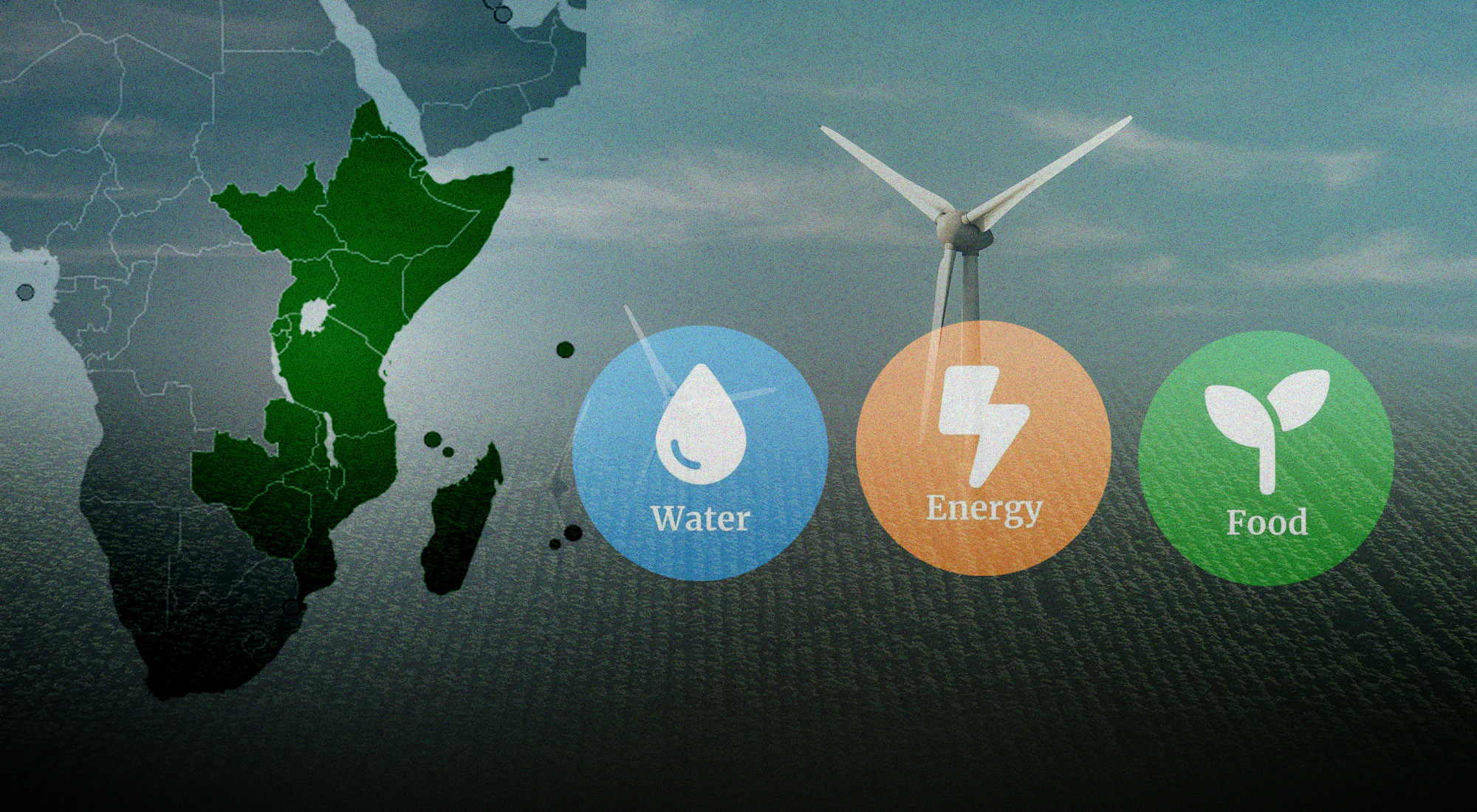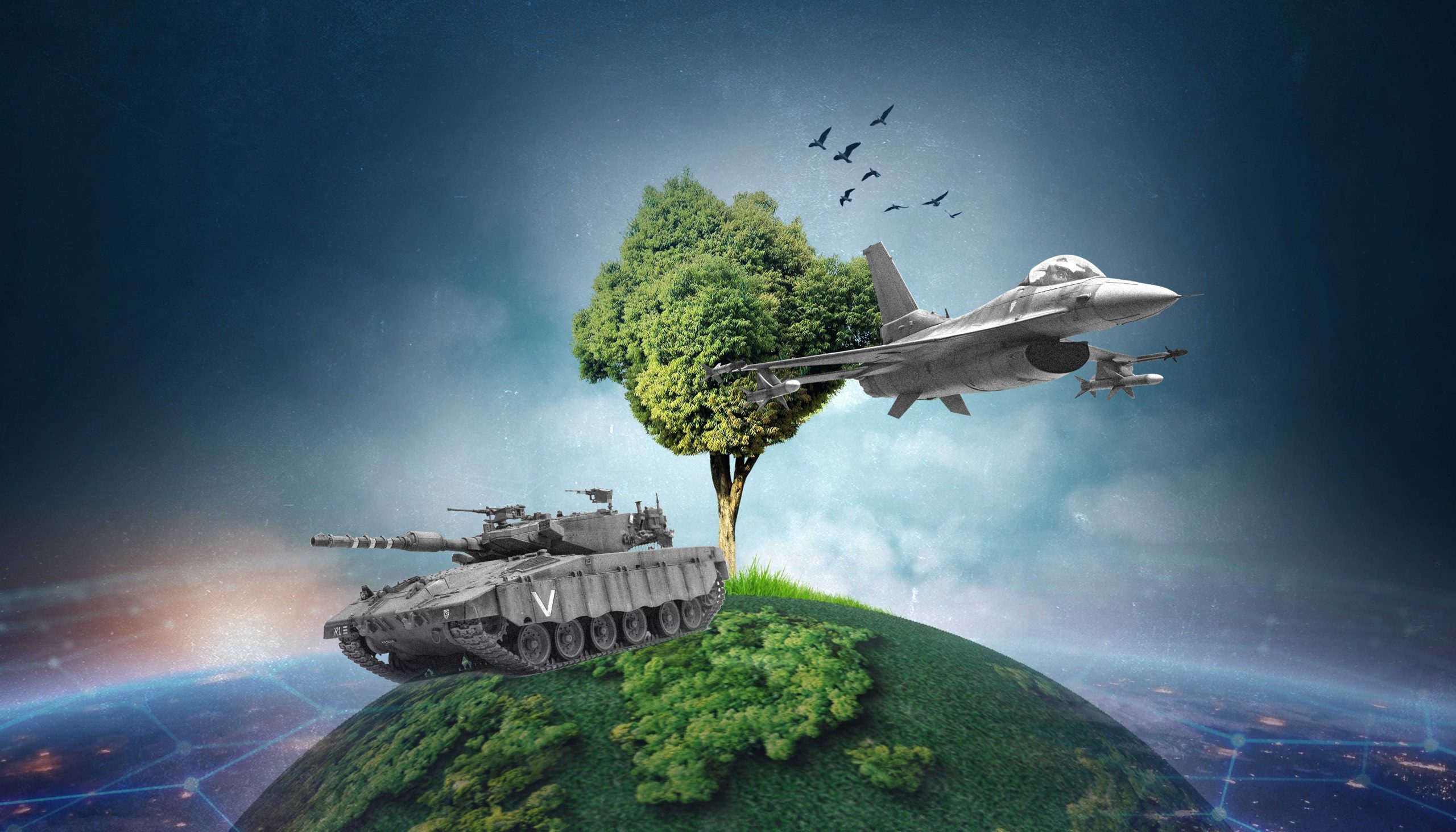The Gulf Cooperation Council (GCC) comprises six nations that have witnessed steady economic growth for several decades. Vast swaths of the region’s wealth and exponential socio-economic development are due to its rich oil and gas resources. However, countries in the GCC have begun diversifying their economies to limit their resource dependency. This phenomenon, coupled with a global dialogue on sustainable development and climate change, has made climate finance an increasingly important policy option in the region.
Climate finance holds vast potential for the GCC by introducing renewable energy technology, green enterprises, green bonds, and green Sukuks (Islamic Shari’ah-compliant bond-like instruments) to the region. As these countries seek to diversify their economies, the promotion of sustainable finance can help cut costs, reduce carbon emissions, conserve resources, and create jobs. Stable economic growth has increased domestic energy demand and has led to a desire to safeguard energy export revenues for the future. To meet these demands – i.e., safeguarding present needs while securing future economic growth – green growth strategies such as climate finance and sustainable development must become prominent economic policies in the GCC.
This paper explores green growth strategies in the GCC and associated potential opportunities and challenges. It also analyzes the developments unique to the Gulf region. The region is committed to the United Nations 2030 Agenda for Sustainable Development, comprising the 17 Sustainable Development Goals (SDGs), seeking the global eradication of poverty, economic inequality, unemployment, unequal access to healthcare, and other critical public goods. A crucial step toward achieving this is to ensure that institutions, corporations, individuals, and other entities promoting the SDGs are adequately financed. This is broadly known as sustainable finance. The United Nations Environment Program [1] (UNEP, 2017, p.24) has a working definition for such practices:
A sustainable financial system is stable and creates, values, and transacts financial assets in ways that shape real wealth to serve the long-term needs of a sustainable and inclusive economy along all dimensions relevant to achieving those needs, including economic, social, and environmental issues.
Climate finance is the subset of a sustainable financial system. According to UNEP (2021), it refers to local, national, and transnational financing to mitigate the effects of climate change. [2] In the GCC, states’ national economic strategies, adopting sustainable finance frameworks alongside environmental, social, and governance guidelines, and innovative financial tools such as green Sukuks and green bonds, are all examples of climate finance. However, there is more than just economic diversification that drives the need for climate finance in the region. Reports from Oxford Economics claim that the GCC could shrink up to 20 percent of its current economic size by 2050 if global temperatures rise by 2°C, vis-a-vis a scenario where temperatures remain at pre-industrial levels. [3]
GCC countries have adopted an innovative approach toward addressing this challenge. Instead of implementing restrictive policies, they have established various programs and reforms to attract foreign investment and business innovation. These reforms, throughout the GCC, seek to stimulate the private sector. For instance, both the KSA and the UAE have adopted PPP (Public-Private Partnership) litigation to empower the private sector. The UAE and Bahrain have implemented ESG guidelines to promote sustainability reporting among the private sector. For example, the Dubai Financial Market (DFM) established the UAE Index for Environment, Social, and Governance to motivate listed companies to embrace ESG practices. [4] The Qatar Stock Exchange (QSE) introduced an ESG Guidance in 2017 to assist listed companies wishing to incorporate ESG reporting into their existing reporting processes. [5]
The aim is to attract sustainable businesses and investments while reinventing unsustainable industrial practices so that economic losses are reduced. An example of the latter is the National Water and Energy Demand Management Program, a UAE federal initiative targeting the three most energy-consuming sectors – transport, industry, and construction. It aims to reduce energy demand by 40 percent, increase renewable energy’s contribution to the energy mix by 50 percent, and expand water reuse by 95 percent.
The program combines the efforts of the UAE Energy Strategy 2050 and UAE Water Security Strategy 2036. To realize the objectives, the government seeks to establish six connecting networks between water and electricity entities across the UAE to provide 91 liters of water per person per day in emergencies. Such a strategy has estimated savings of AED 74 billion and will reduce carbon dioxide emissions associated with the water desalination process by 100 million metric tons. Moreover, the UAE plans to invest AED 600 billion in crucial infrastructure that promotes energy storage and clean energy sources as part of this initiative. [6] The National Climate Change Plan of the UAE 2017–2050 is another initiative where the private sector has been central in achieving sustainability plans.
GCC countries realize that dwindling fossil fuel reserves are likely to increase extraction costs. Their GDPs, largely dependent on this industry, need to prepare for a green future to protect their economies. Consequently, state-owned power generation companies are making heavy investments to diversify their operations. For instance, Oman’s state-owned oil and gas company OQ, Hong Kong-based renewable hydrogen developer InterContinental Energy, and Kuwait-based energy investor Enertech Hydrogen, are investing US $30 billion to build one of the world’s largest green hydrogen plants in Oman’s Al Wusta governorate. [7]
Similarly, US-based Air Products, Saudi Arabia’s utilities developer Acwa Power, and Neom have signed an agreement for the Helios Green Fuels project. [8] Powered entirely by sun and wind, the plant will be among the world’s biggest green hydrogen producers and power the planned megacity of Neom in 2025, expected to be a “zero-emissions exemplar helping transform society and the economy.” [9] Qatar’s North Field East megaproject, the world’s biggest single non-associated natural gas field, is owned and operated by Qatar Petroleum and its subsidiaries. [10]
State-level cooperation remains crucial in the Gulf’s move toward sustainable finance. The GCC Interconnection Authority (GCCIA) includes nine 400 kilovolts substations, three high-voltage direct current converters, 100-kilometer submarine cables, and 1,050-km overhead transmission lines. This is collectively known as the GCC power grid. [11] The GCC framework holds immense potential for further cooperation and integration – not just between the six-member countries, but also in the MENA region, through exporting and trading green electricity with other countries such as Iraq and Egypt. Green energy diplomacy could become a significant part of GCC countries’ future interactions.
The GCC countries have also quickly adapted to the financial needs of green enterprises. To promote climate finance, countries have been issuing green bonds and green Sukuks. Green bonds are financing debt instruments issued by national, regional, multinational public entities, and private corporations (UNEP, 2021, p.18). The National Bank of Abu Dhabi issued the first green bond in the region in 2017. In September 2020, Qatar National Bank (QNB) issued the first green bond in Qatar, a $600 million tranche, under its MTN Program.
Green Sukuks are Islamic financing instruments that can be used to scale up financing of socially responsible and environment-focused investment. These green bonds are compliant with Islamic Shari’ah principles where the risks and returns are shared based on specific rules following investors’ financial contributions (UNEP, 2021, p.19). While demand for green Sukuks has been growing in recent years, it still only accounts for less than three percent of global Sukuk issuances as of June 2020. In May 2019, UAE-based real estate developer Majid Al-Futtaim issued the GCC’s first green Sukuk to finance green building and energy efficiency investments, making the second offering in October 2019. In November 2019, the Islamic Development Bank issued its debut green €1 billion Sukuk to fund climate-change and green projects across its 57 member countries, setting an example for the potential of financial institutions in promoting green finance.
Saudi Arabia’s electric transmission corporation, the Saudi Electricity Company (SEC), issued a $1.3 billion green Sukuk and announced an additional $5.2 billion order book. [12] These bonds will be used to finance green projects relating to energy efficiency and renewable energy. SEC expects this to lead to energy savings of one percent of the country’s total consumption compared with the level in 2019. Enterprises continue to drive the sector of climate finance. Green Sukuk’s success in Southeast Asia suggests there is great potential for its market to grow in the GCC, especially given the strong market dominance of the Islamic financial industry, in particular in the UAE, Saudi Arabia, and Qatar. [13]
Transitioning to sustainable finance holds potential – but it also poses specific challenges. Changes to existing political institutions and businesses could generate resistance among these players, thus disrupting the change. However, this challenge could be effectively countered by the authorities’ decision to get national energy companies and the private sector on board – which seems to be the chosen modus operandi. For instance, most renewable energy investments are led by state-owned energy corporations, decreasing the likelihood of powerful anti-green resistance, as is the case in most other countries, including the United States. [14]
Operational risks are associated with inadequate technical support and a lack of understanding of new technologies, which can be countered through attracting specialized firms and expertise into the region and its green investments. Furthermore, the GCC countries have not established legal enforcement mechanisms to ensure the timely and effective implementation of green finance and reforms. Strict laws and penalties against corporations that violate their sustainability obligations are necessary for reaching the set targets. There is also a lack of awareness among local financiers and investors about the merits of sustainable finance. According to UAE Securities and Commodities Authority’s Master Plan for Sustainable Capital Markets (2019), [15] one of the main challenges to sustainable finance is that many investors are not aware of the benefits of sustainable businesses and markets (UNEP, 2021, p.95). To ensure better awareness, governments could begin by gathering ESG-related data, developing awareness campaigns, and establishing sustainable finance departments within government ministries.
However, the opportunities outweigh the challenges. The GCC as a region has unique characteristics – economic homogeneity, resource scarcity, and environmental threats can be addressed with a transition to a green economy. It is an opportunity to end the decades of economic dependency on fossil fuels. Renewable energy promises job creation by diversifying the economy. According to the International Renewable Energy Agency, renewables in the GCC can create 220,500 new jobs. [16] Rising global temperatures have made the Gulf region vulnerable to water scarcity, rising sea levels, drought, land degradation, and desertification. Climate change is expected to have severe repercussions on the region’s food, energy, and water security through its negative impact on vital sectors in the post-oil era. Green growth will reduce carbon emissions and prepare economies for environmental risks, increasing the region’s adaptability to change.
The financial system plays a vital role in supporting the GCC’s transition to a green economy. For the six countries, investing in green projects must be coupled with legal and regulatory mechanisms to ensure that they realize their full potential. Green finance through issuing green bonds and green Sukuks could generate massive benefits in the region, especially since Islamic finance is already prevalent in the region. ESG guidelines for listed companies are prominent, but mandating them could result in a faster transition to green economies. The private sector plays a crucial role in this transition. GCC governments’ high investments in green infrastructure and reforms can successfully reduce investors’ and companies’ perceived high costs of transitioning to sustainability. As the world recovers from the Covid-19 pandemic, opportunities for green growth strategies will be accelerated – providing an additional boost. All in all, the GCC countries are on their way to becoming an exemplar for green growth, sustainable finance, and highly efficient societies.
References
- UNEP (2017). “Roadmap for a Sustainable Financial System. UNEP Inquiry and World Bank” November 2017: <https://sustainabledevelopment.un.org/index.php?page=view&type=400&nr=2451&menu=1515>
- UNEP Finance Initiative (2021). “Promoting Sustainable Finance and Climate Finance in the Arab Region.” January 2021: https://www.unepfi.org/wordpress/wp-content/uploads/2021/01/Sustainable-Arab-Finance-Report-Jan-2021.pdf
- Arabian Business (2021). The GCC region confronts the Climate Change Quandary. May 2019. Accessed at: <https://www.arabianbusiness.com/comment/462868-the-gcc-region-confronts-the-climate-change-quandary>
- Arabian Business (2021). The increasing role of ESG investments in the race to zero. May 2021: <https://www.arabianbusiness.com/commercial-banking/463240-the-increasing-role-of-esg-investments-in-the-race-to-zero>
- College of Islamic Studies, Hamad Bin Khalifa University (2021). Promoting Green Finance in Qatar: Post-Pandemic Opportunities and Challenges. January 2021: <https://www.hbku.edu.qa/en/news/pandemic-opportunities-challenges>
- Gulf News (2017). UAE Energy Plans for 2050 to achieve balance between energy production and consumption: <https://gulfnews.com/business/energy/uae-energy-plan-for-2050-to-achieve-balance-between-energy-production-and-consumption-1.1959893>
- The Guardian (2021). Oman plans to build the world’s largest green hydrogen plant. May 2021: <https://www.theguardian.com/world/2021/may/27/oman-plans-to-build-worlds-largest-green-hydrogen-plant>
- EQ International (2021). Saudi Arabia moves on $5bn hydrogen project. April 2021: <https://www.eqmagpro.com/saudi-arabia-moves-on-5bn-hydrogen-project/>
- World Oil (2021). Saudi Arabia takes steps to lead the $700B global hydrogen market. March 2021: <https://www.worldoil.com/news/2021/3/5/saudi-arabia-takes-steps-to-lead-the-700b-global-hydrogen-market>
- Offshore Technology. North Field Expansion Project: <https://www.offshore-technology.com/projects/north-field-expansion-project/>
- Middle East Business Intelligence (2021). Common needs, diverging agendas: The GCC at 40: <https://www.meed.com/gcc-40-year-anniversary>
- Zawya (2020). Demand for green Islamic bonds gain momentum in GCC states. September 2020: https://www.zawya.com/mena/en/markets/story/Demand_for_green_Islamic_bonds_gain_momentum_in_GCC_states-ZAWYA20200916042717/
- S&P Global (2019). Green Finance Takes Hold In The GCC. February 2019: <https://www.spglobal.com/en/research-insights/articles/green-finance-takes-hold-in-the-gcc>
- Unearthed (2020). Revealed: BP and Shell back anti-climate lobby groups despite pledges. September 2020: <https://unearthed.greenpeace.org/2020/09/28/bp-shell-climate-lobby-groups/>
- United Arab Emirates (2019), Securities and Commodities Authority, The Securities and Commodities Authority Master Plan for Sustainable Capital Markets: <https://www.sca.gov.ae/en/media-center/news/16/1/2019/sca-launches-its-capital-market-sustainability-plan-at-the-abu-dhabi-sustainable-finance-forum-follo.aspx>
- IRENA (2019). Renewable Energy Market Analysis: GCC 2019. January 2019:<https://www.irena.org/publications/2019/Jan/Renewable-Energy-Market-Analysis-GCC-2019>








